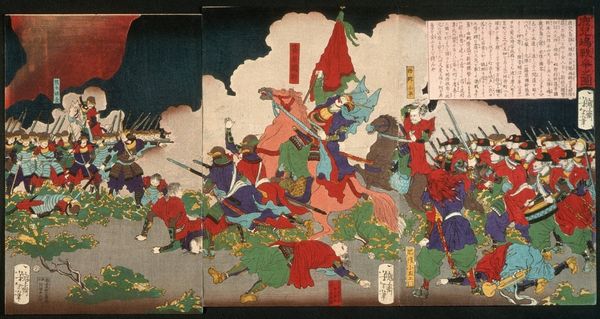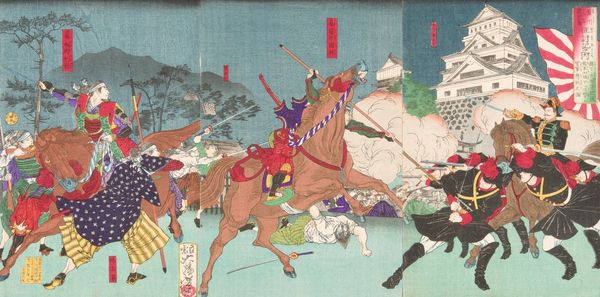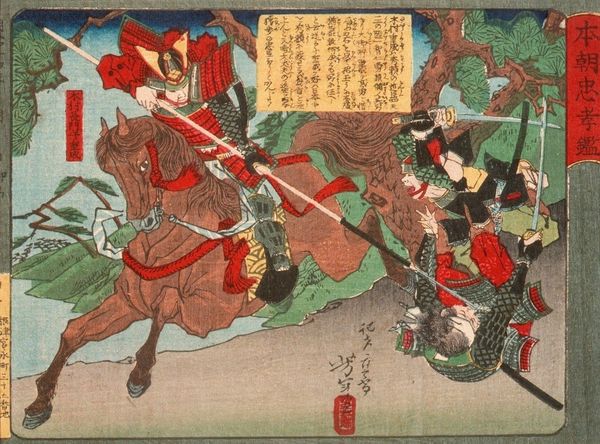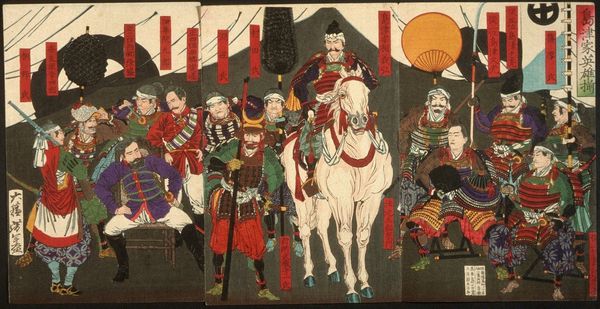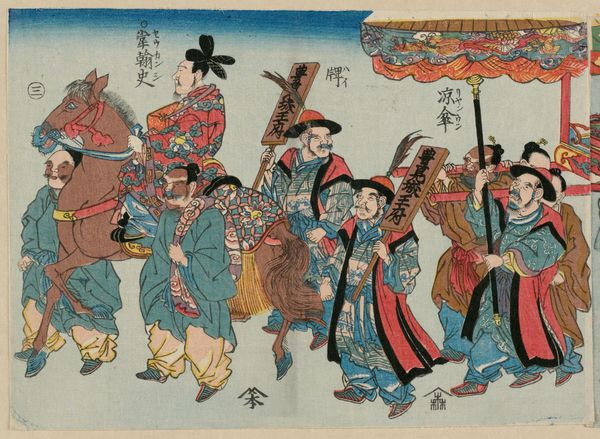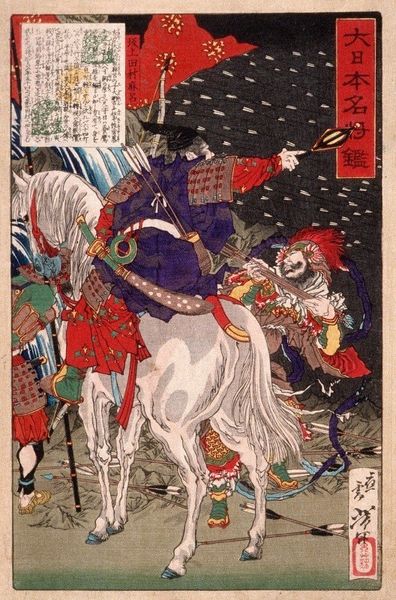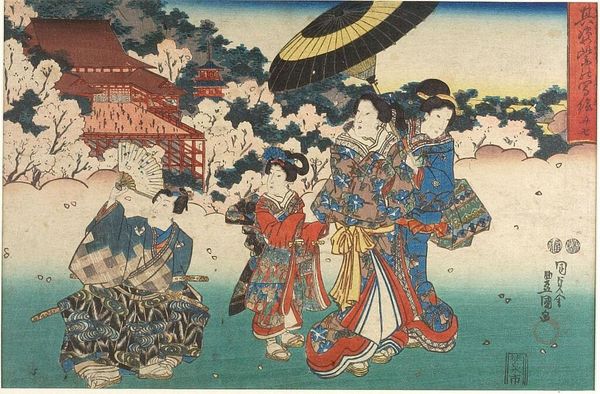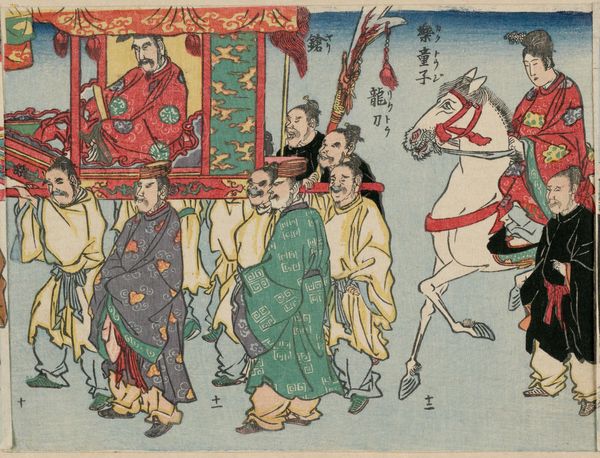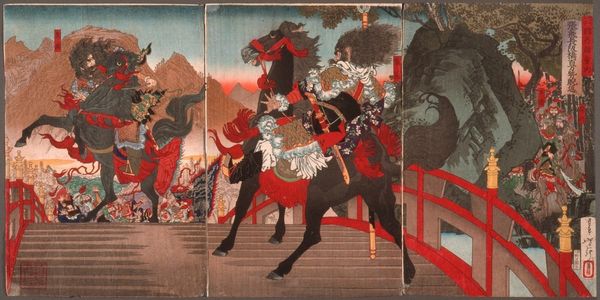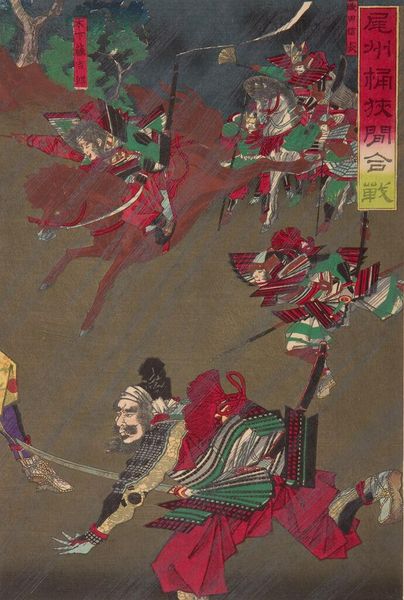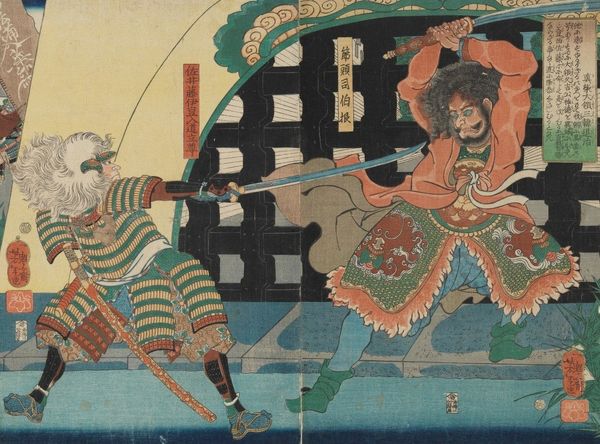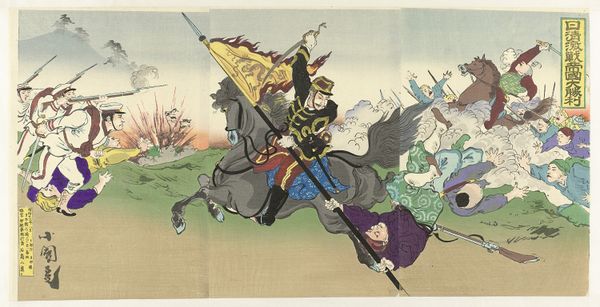
Copyright: Public Domain: Artvee
Curator: What an unsettling yet stirring vision this is! I keep wanting to touch the smoke. Editor: It's an early woodblock print by Tsukioka Yoshitoshi, created in 1877. It's titled "A Chronicle of the Pursuit of Rebels at Kagoshima." I'm immediately struck by the depiction of materials: the flags, the clothing, and most pointedly the military gear. Each element signals a social hierarchy dependent on availability of materials. Curator: Indeed, look at the flags held high amidst what appears to be the fog of war. One senses Yoshitoshi wrestling with representing the turmoil within, between loyalty and the human cost of such pursuit, and that billowing pink seems to swallow all sentiment whole. Editor: The 'pinkness' you've noticed comes from Yoshitoshi's precise rendering of aniline dyes; a new innovation during this period. While Yoshitoshi evokes an "unsettling vision" you seem drawn to, for me it is an efficient process utilizing chemical advancements allowing more prints in an extended print run with brighter colors... This signals both opportunity and risk in a moment of change. Curator: A fair point, if cold blooded! I can't help but see it with romantic eyes: look how the figures, while rigidly composed, are on the verge of being overwhelmed, even the horses, bearing them with reluctant obedience. I bet you see cheap reigns! Editor: Well, no, though it's interesting you mention that. Actually I note that the reigns and saddles of the horses may be leather, but in all probability, mass produced and not locally crafted from indigenous materials. I think this shift in the modes of production tells the tale as surely as anything. Curator: Perhaps, but tell me, as we leave, do you feel any resonance in its dreamlike landscape with current unrest? Isn't all conflict essentially just the "pursuit of rebels," however righteous? Yoshitoshi, by emphasizing this drama, allows us access to history, memory, and grief that touches all of us to this very day. Editor: Absolutely, even as new technologies for creation and representation create new kinds of separation. Yoshitoshi documents but cannot imagine that far. He couldn't know our contemporary experience. Let's leave that imaginative labor for those looking at this in future generations, with new material conditions of possibility.
Comments
No comments
Be the first to comment and join the conversation on the ultimate creative platform.
